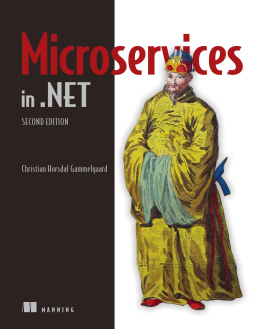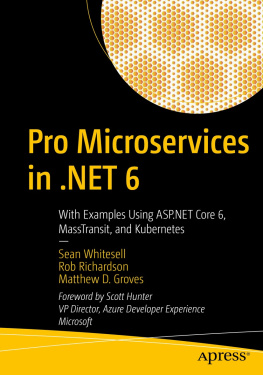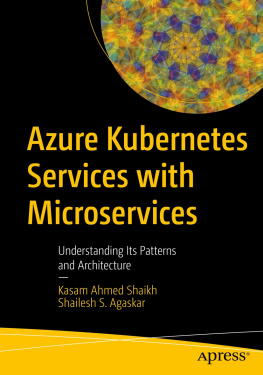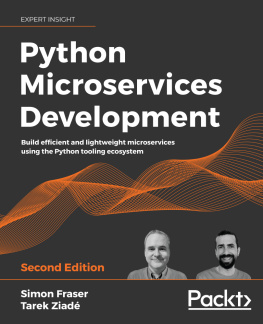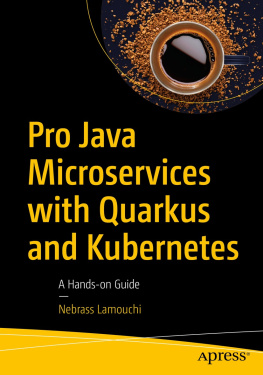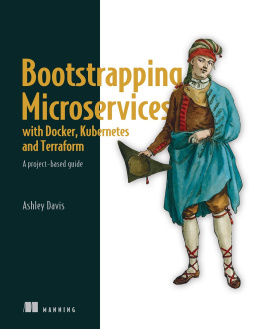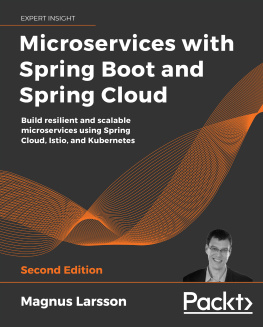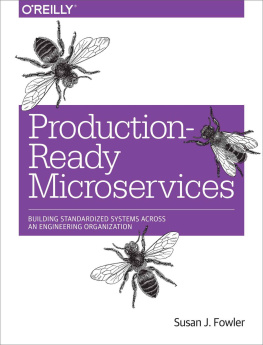
Microservices in .NET
Second Edition
Christian Horsdal Gammelgaard
To comment go to liveBook

Manning
Shelter Island
For more information on this and other Manning titles go to
www.manning.com
Copyright
For online information and ordering of these and other Manning books, please visit www.manning.com. The publisher offers discounts on these books when ordered in quantity.
For more information, please contact
Special Sales Department
Manning Publications Co.
20 Baldwin Road
PO Box 761
Shelter Island, NY 11964
Email: orders@manning.com
2021 by Manning Publications Co. All rights reserved.
No part of this publication may be reproduced, stored in a retrieval system, or transmitted, in any form or by means electronic, mechanical, photocopying, or otherwise, without prior written permission of the publisher.
Many of the designations used by manufacturers and sellers to distinguish their products are claimed as trademarks. Where those designations appear in the book, and Manning Publications was aware of a trademark claim, the designations have been printed in initial caps or all caps.
Recognizing the importance of preserving what has been written, it is Mannings policy to have the books we publish printed on acid-free paper, and we exert our best efforts to that end. Recognizing also our responsibility to conserve the resources of our planet, Manning books are printed on paper that is at least 15 percent recycled and processed without the use of elemental chlorine.

| Manning Publications Co. 20 Baldwin Road Technical PO Box 761 Shelter Island, NY 11964 |
Development editor: | Helen Stergius |
Technical development editor: | Michael Lund |
Review editor: | Mihaela Batini |
Production editor: | Deirdre S. Hiam |
Copy editor: | Michele Mitchell |
Proofreader: | Keri Hales |
Technical proofreader: | Karsten Strbk |
Typesetter and cover designer: | Marija Tudor |
ISBN: 9781617297922
Praise for the first edition
The best microservices in .Net reference I have read so far.
Julien Pohie, Senior Software Developer, Thoughtworks
This book lays out all the necessary details to design new solutions with microservices; it has material to transform your existing monolithic, tiered, service-oriented architectures.
Karthikeyarajan Rajendran, Architect, McAfee
Detailed analysis on how to use microservices in the .Net world with a good set of real-world examples.
Raushan Jha, SDE 2, Microsoft IDC
Microservices in .Net provides the knowledge to start working in a professional environment to develop real industry microservices, with the perfect tuning to be cost effective.
Daniel Vasquez, Senior Developer, Tokiota
If youre building SaaS products, you will eventually realize that agility in product delivery is important. This book provides a detailed understanding of how microservices can enable your .Net applications to be resilient in production.
Adhir Ramjiawan, Software Developer, Dotdigital
A well-written, concise, and comprehensive book covering important topics surrounding microservices. I could not put it down and would definitely recommend it.
Tanya Wilke, Web Application Developer, Sanlam
front matter
preface
When I first talked to Manning about writing a book, we discussed a book about Nancy. Part of me was excited to write about Nancy again, because it was an awesome web framework, but my first book was also about Nancy, and a different part of me wanted this book to be something more. After some contemplation and some back and forth with Manning, it became clear that I wanted to write about microservices; I wanted to write a book that was more about designing and implementing microservices than about any specific technology, while at the same time showcasing some great, lightweight .NET technologies. That became the first edition of this book.
Since then, the technology landscape has moved on: development of Nancy has stopped and .NET Core (which was nascent when the first edition was written) has incorporated many useful ideas from community projects and changed its name to .NET. At the same time, microservices have become even more widespread, and most of the design and architecture advice from the first edition still holds up. I felt the first edition still has a lot to offer, but I also felt it needed a technology update. Thats the book youre about to read, and I hope youll not only learn how to be successful with microservices, but also learn the value of simplicity.
acknowledgments
Writing a book takes timea lot of time. So the first thank you is to my wife, Jane Horsdal Gammelgaard, for supporting me all the way through. Youre awesome, Jane.
I would like to thank my editor on the second edition, Helen Stergius, whose patience through many missed deadlines, advice, and guidance made this edition possible. Id also like to thank the editor on the first edition, Dan Maharry, who pushed me to write a much better book than I thought I could at the time. A big thank you also goes to my technical editor, Michael Lund, for his thorough code reviews and suggestions for improvements, and for ripping apart my line of reasoning whenever it wasnt clear. A special thanks to Karsten Strbk for his in-depth technical proofreading.
I cant thank enough the amazing group of technical peer reviewers: Adhir Ramjiawan, Allan Makura, Alper Silistre, Daniel Vasquez, David Paccoud, Dennis Hayes, Edin Kapic, Emanuele Origgi, Ernesto Cardenas Cangahuala, George Onofrei, Jeff Smith, Johnathan Sewell, Juan Luis Barreda, Julien Pohie, Justin Coulston, Kalyan Chanumolu, Karthikeyarajan Rajendran, Matt Ferderer, Mike Burgess, Mike Manuel, Oliver Korten, Raushan Jha, Raymond Cheung, Ricardo Peres, Richard B. Ward, Sau Fai Fong, Simon Seyag, Stefan Turalsk, Sumit K Singh, Tanya Wilke, Thomas Overby Hansen, Unnikrishnan Kumar, Viorel-Marian Moisei, and Wayne Mather. They suggested topics and other ways of presenting topics and caught typos and mistakes in code and terminology. Each pass through the review process and each piece of feedback provided through the forum discussions helped shape the book.
Finally, I want to thank the people at Manning who made this book possible: publisher Marjan Bace, acquisitions editor Eleonor Gardner, production editor Deirdre Hiam, copyeditor Michele Mitchell, page proofer Keri Hales, and everyone else on the editorial and production teams.
about this book
Microservices in .NET is a practical introduction to writing microservices in .NET using powerful yet easy-to-use technologies, like the simple MVC controllers and middleware. Ive tried to present the material in a way that will enable you to use what you learn right away. To that end, Ive tried to tell you why I build things the way I do, as well as show you exactly how to build them.
Who should read this book
Next page
